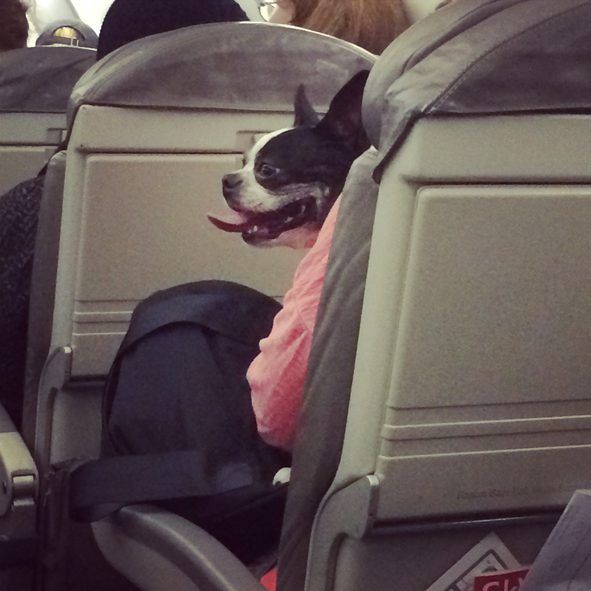
If you have flown anywhere lately, you are likely aware that there are many dogs flying with their owners these days. Take a stroll down any airline terminal, and you will see a number of dogs strolling on leash with their owners—and quite a few behaving in ways that are quite uncharacteristic of trained service dogs. I’ve seen dogs relieving themselves in airline terminals, barking or growling at other dogs, pulling on their leashes, and panting and showing other signs of stress.
I have chalked all of this up to the fact that so-called Emotional Service Animals (ESAs) were permitted to fly with their owners on airplanes for free, and that more and more people were willing to call their pet dogs an emotional service animal. But I was unaware until recently that in March 2021, after a lengthy public comment period and analysis, the Department of Transportation (DOT) changed the rules in its Air Carrier Access Act (ACAA) concerning emotional service animals (ESAs) on airplanes. At least when it comes to air travel, ESAs have been reclassified as pets, with no greater rights or privileges on airplanes as any other pets. Today, only service dogs—dogs who have been individually trained to do work or perform tasks for the benefit of a person with a disability—can fly with their owner outside of a pet carrier.
Undoubtedly, some owners who previously claimed that their dogs were emotional service animals are now claiming that their dogs are service dogs, trained to perform specific tasks if they detect their owner is having or about to have a psychiatric challenge or crisis. Owners of a psychiatric service dog must now submit forms to the airline they plan to travel with, attesting to their service animal’s health, behavior, and training.
As daunting as that may sound, a person who just really wants to fly with their reasonably well-behaved dog in the cabin with them will not find it difficult to lie on these forms—though I must mention that the forms state at the top, “It is a Federal crime to make materially false, fictitious, or fraudulent statements, entries, or representations knowingly and willfully on this form to secure disability accommodations provided under regulations of the United States Department of Transportation.”
I love seeing calm, well trained service dogs in public—and I hate seeing stressed dogs who are clearly being pushed past their comfort zone being dragged through public places. I find it hard to believe that there at genuinely that many people with trained psychiatric service dogs traveling by air, but maybe I am just flat wrong.
What’s your experience with dogs in airports and on airplanes?


